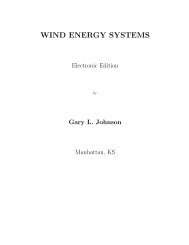Small Scale Foundries for Developing Published by: Intermediate ...
Small Scale Foundries for Developing Published by: Intermediate ...
Small Scale Foundries for Developing Published by: Intermediate ...
Create successful ePaper yourself
Turn your PDF publications into a flip-book with our unique Google optimized e-Paper software.
than is required <strong>by</strong> a hand moulder. Nevertheless<br />
<strong>for</strong> any moulding machine the investment<br />
is relatively high, and is not usually<br />
justified unless there is a sure demand <strong>for</strong><br />
the castings, and sufficient sand, metal, and<br />
space to ensure that the machine is<br />
thoroughly utilized.<br />
It is possible to learn to operate moulding<br />
machines with a few hours’ practice, whilst<br />
the production of a mould <strong>by</strong> hand ramming<br />
is a much more skilled operation.<br />
The CO, Process<br />
In recent years many techniques have been<br />
developed to supplement the use of traditional<br />
foundry sands. These techniques<br />
involve using sand bonded with materials<br />
orher than clay.<br />
One such method is the CO, or carbon<br />
dioxide process. Ciean dry sand is<br />
thoroughly and mechanically mixed with<br />
between 3% and 7% of sodium silicate<br />
(water-glass). This material is available <strong>for</strong> a<br />
number of industrial processes. The special<br />
grades produced <strong>for</strong> foundry purposes are<br />
the most suitable, but are not always essential.<br />
The best ratio of silica to soda is 2 : 1 at<br />
a specific gravity of 1.4 to 1.7.<br />
The mould is rammed with the mixed<br />
sand and then the water-glass is caused to<br />
harden <strong>by</strong> passing CO? (carbon dioxide) gas<br />
through the mould. CO, gas in cylinders is<br />
available <strong>for</strong> a variety of purposes as well as<br />
<strong>for</strong> foundries.<br />
It is necessary to use a reducing valve from<br />
the cylinder in order to control the pressure<br />
of the CO, gas to about 1.5 to 2.0 atmospheres.<br />
The gas ;. fed into the sand through<br />
thin metal tubes or under a board or plastic<br />
cover. Care has to be taken not to waste CO,<br />
gas. The gassing time depends upon the size<br />
of the mouid or core - from half a minute<br />
up to about five minutes. About one or two<br />
cubic metres of CO, gas are needed <strong>for</strong> every<br />
100 kg of sand - or 1 kg <strong>for</strong> every kg of<br />
sodium silicate.<br />
Sometimes CO, sand mixtures include a<br />
small amount of clay or other bonding material<br />
so that the mould may be removed from<br />
the pattern without collapse be<strong>for</strong>e hardening;<br />
in other cases the mould is gassed while<br />
still in contact with the pattern.<br />
Water-glass and carbon dioxide are relatively<br />
cheap raw materiais. The sand cannot<br />
readily be re-used. Water-glass bonded<br />
moulds may also be hardened <strong>by</strong> special<br />
chemicals (esters such as glycerol acetates)<br />
or <strong>by</strong> stove drying. However CO1 gas if<br />
available is generally more satisfactory. The<br />
CO, process is suitable <strong>for</strong> all sizes of<br />
castings and generally requires less skill than<br />
clay-bonded sand moulding. It may be used<br />
<strong>for</strong> cores as weil as <strong>for</strong> moulds.<br />
CO, moulds and cores often produce a<br />
rough casting finish and <strong>for</strong> high quality<br />
work should be painted with carbonaceous<br />
material (graphite mixed with clay or other<br />
bonding agents suspended in water or<br />
alcohol. The water must be dried or the<br />
alcoho! burned off be<strong>for</strong>e closing the<br />
mouids). CO> castings often require more<br />
work at the casting cleaning stage than green<br />
sand castings.<br />
For some castings a CO, sand layer of 5<br />
cm to 20 cm may be backed with a claybonded<br />
green sand. Such moulds are<br />
cheaper, although less strong and rigid than<br />
full CO, moulds. They should not be left to<br />
stand <strong>for</strong> long- periods be<strong>for</strong>e casting as<br />
moisture can soak through to the CO: layer<br />
and so spoil the hard surface.<br />
Air-set Moulding<br />
A useful method <strong>for</strong> making a variety of<br />
large and of small moulds without the use of<br />
skilled iabour or expensive machinery is the<br />
use of chemically bonded air-setting sand.<br />
Clean, dry, clay-free sand (with no shell or<br />
limestone contamination) is mixed with<br />
about 1 IV’z % to 2% of special chemical resin<br />
and a hardener, in such proportions that<br />
within a few minutes a hard bond is <strong>for</strong>med.<br />
Be<strong>for</strong>e the resin hardens the sand flows<br />
easily and needs only a minimum of packing<br />
or ramming around the pattern. The<br />
chemical agents may be mixed with the sand<br />
in continuous screw feed mixers; these are<br />
usually relatively simple pieces of equip-














